Click to view our Accessibility Statement or contact us with accessibility-related questions















Showing 1 of 43 conversations about:
equalunique
475
Sep 5, 2018
bookmark_border
Ecca
156
Sep 6, 2018
bookmark_border
equaluniqueI'm glad you're enjoying it!
I definitely tried to lean the design almost entirely toward Plover steno. For general computer use, I felt there were many situations that warranted a traditional keyboard layout, so that layout is more of a bare minimum necessity rather than a secondary focus or something to strike a balance between.
Overall, your summary is spot on with how I feel about the keyboard myself. I'll also back you up on the sketchy plate, since it is actually left completely unfinished. Even the scorch marks from the cutter aren't buffed away. I tried to only cut costs where the functionality was unaffected, which is why there is still a steel plate: bendy plastic would affect the typing feel.
There are a few things I'd like to clarify, though. The RJ45-looking interconnect is actually 10P10C (RJ50), which means it is unfortunately less common than even TRRS cables. The benefit is still in the holding strength of the connector, while the extra wires allow using a single MCU with a single key matrix. As for shortening the standoffs, leaving a cutout for the port tends to let the acrylic crack under pressure far more easily with the way the standoffs are arranged. To arrange the standoffs in a stronger pattern to suit a cutout would require spacing the switches differently, which conflicts with the keycap arrangement. I think the ideal solution here would likely be a solid milled bottom half to screw into (rather than the sandwich design). I have some ideas in mind with wedge-shaped bottom cases that could simultaneously thin the keyboard, make room for the port, and naturally tilt your hands outward a few degrees.
I definitely tried to lean the design almost entirely toward Plover steno. For general computer use, I felt there were many situations that warranted a traditional keyboard layout, so that layout is more of a bare minimum necessity rather than a secondary focus or something to strike a balance between.
Overall, your summary is spot on with how I feel about the keyboard myself. I'll also back you up on the sketchy plate, since it is actually left completely unfinished. Even the scorch marks from the cutter aren't buffed away. I tried to only cut costs where the functionality was unaffected, which is why there is still a steel plate: bendy plastic would affect the typing feel.
There are a few things I'd like to clarify, though. The RJ45-looking interconnect is actually 10P10C (RJ50), which means it is unfortunately less common than even TRRS cables. The benefit is still in the holding strength of the connector, while the extra wires allow using a single MCU with a single key matrix. As for shortening the standoffs, leaving a cutout for the port tends to let the acrylic crack under pressure far more easily with the way the standoffs are arranged. To arrange the standoffs in a stronger pattern to suit a cutout would require spacing the switches differently, which conflicts with the keycap arrangement. I think the ideal solution here would likely be a solid milled bottom half to screw into (rather than the sandwich design). I have some ideas in mind with wedge-shaped bottom cases that could simultaneously thin the keyboard, make room for the port, and naturally tilt your hands outward a few degrees.
equalunique
475
Sep 12, 2018
bookmark_border
EccaEcca,
Thank you for your detailed response! Now I better understand your design decisions and also am clear on the RJ50 connector.
Here is a question for you: What if the inner edges of the PCBs were lengthened so that the RJ50 connector sticks out 4mm or so, then was installed on the top side of the PCB instead of the bottom. This would require a cutout on the steel plate instead of the acrylic one. Doing so would then allow for an even lower case profile whilst keeping the acrylic plate solid for structural integrity. It might be awkward having the RJ50 connector so close to the thumb keys, but it is already somewhat awkward to type on this with keycaps over 1" above the desk, so maybe not a bad trade off.
One more question,: Why RJ50 instead of RJ45? Or TRRS?
(Edited)
Ecca
156
Sep 13, 2018
bookmark_border
equaluniqueI hadn't seen stenographers ever rest their palms on anything, so the connector and case height was not a design priority at the time. If the smaller thickness more than makes up for the width or length increase by putting the connector on the top, that might not be a bad idea for a future iteration.
For connector choice, the 10P10C was chosen because 10 wires is enough to forego a second MCU or multiplexing chip of some kind. I can directly run the key matix wires from one half to the other and only need a single MCU, bringing the final price even lower. 8 wires in RJ45 isn't quite enough for the number of keys I'm using and TRRS is practically impossible without more ICs.
For connector choice, the 10P10C was chosen because 10 wires is enough to forego a second MCU or multiplexing chip of some kind. I can directly run the key matix wires from one half to the other and only need a single MCU, bringing the final price even lower. 8 wires in RJ45 isn't quite enough for the number of keys I'm using and TRRS is practically impossible without more ICs.
Related Posts
Switchlab
[IC] SL Cipher (Morse code/Phonetic Letters inspired keycaps)
HEY EVERYONE! Switchlab here and welcome to the IC for Cipher. DESIGN Inspired by morse code and phonetic alphabets commonly used in the military for voice authentication/ procedures. More details on Cipher below: Geekhack IC FORM RENDERS SOCIALS Follow us for updates and upcoming projects. Instagram Discord
Jan 25, 2024

sdtr
Suggestion: Drop should make a budget barebones kit.
Drop has marketshare in many areas, but they appear to not have any cheap barebones kits (sub 50$) currently available. They could do something like the CIY tester 68, MG75, or MG108 (ideally a 65%) . This could be a keyboard that would be a great entryway into mechanical keyboards, and have drop be recognized as a budget player more. It could also have deals that encourage you to buy other drop products alongside it (IE: keycaps 10$). It could also work as a 'travel keyboard' which one would bring travelling with them or just something fairly cheap to not be super careful with and just test out whatever.
May 27, 2023
phelper
Please give us a 100% TK keyboard
I love my Drop CNTRL, i need the 10 key. I don't want some subsized keyboard. Full, 100% size, full keyboard with 10 key. Please!
Dec 27, 2022
AggroWill
Nintendo's Family BASIC Keyboard?
Hi, I just got my first personal Drop keyboard a week ago (High-Profile ALT) and I'm loving it so far. Tried a few different keycaps and decided to my shock that I don't actually like how MT3 feels and went back to OEM profile. Anyway, I've been looking at the keycaps that are available and while many look cool, none of them really speak to me. Then I realized what would: Keycaps styled after the Nintendo Family BASIC Keyboard, used with the Famicom (NES in the U.S.) Disk System to teach programming. It's kind of generic, but the Japanese and gray-and-red color scheme would be perfect. The arrow and function keys would have to be shrunk to standard size, but I think it would really look good, especially if Drop released beige casings to go with it. Would this be of any interest to anyone else? Or have I completely missed a keycap set that would hit this mark?
Dec 2, 2022

Thebigboy
[IC] AM AGA | Alice Keyboard
AM AGA by Angry Miao Crazy Designers here. The last few months have been hectic with the upcoming release of our Angry Miao CYBERBLADE wireless earbuds, but we also haven't been sitting still when it comes to keyboards. Today I'll introduce the latest thing we're working on: AM AGA. So far, we have two keyboard styles in our lineup, namely CYBERBOARD, which has gone through several iterations, and AM HATSU, a wireless split ergo keyboard. For the last year or so, we have been thinking about what the next AM keyboard should look like. We have shared some drafts of 65% keyboards on our Discord channel, but those weren't really up to your tastes. mages by @Da R One of the main points of criticism was that they simply didn't have the same presence as other Angry Miao products. We always stress that we want to make products that are valuable and meaningful to people, and definitely don't want to turn Angry Miao into a...
Oct 9, 2022
Trending Posts in Mechanical Keyboards

lantz
Red Samurai on a 75%
Corsair K65 Plus Wireless GMK Red Samurai Moondrop Tactile Tessence
Apr 19, 2024

Keyled
My PRECIOUS!!!!
All that sweat and money paid off. I will use it wisely. Tokyo 60 GMK Serenity Gateron Oil KIng
Apr 19, 2024

TotallyJaded
How do you do per-key RGB lighting on a Shift V2?
I saw the online configurator that lets you do this on the Shift V1, where it spits out a compiled firmware file to flash. The V2 doesn't seem to have this function in the Windows configurator, though. I can't imagine the answer here is "you're going to have to manually write the hex for every key in QMK, compile it, and flash that".
Apr 18, 2024

AiheyStudio
Favorite Artisans
Dragon Pillar Artisan Keycaps Creative Resin Keycaps for 6.25u and 7u Space Bars
Discover the allure of our Dragon Pillar Artisan Keycaps – unique resin keycaps designed to adorn your 6.25u and 7u space bars. Crafted with creativity and precision, each keycap features an...
Apr 18, 2024
lwthunder
Drop CTRL V2 Mechanical Keyboard PCBA
If I want some hot-swap socket for replacement, where I can buy to ensure it fits this PCBA?
Apr 17, 2024
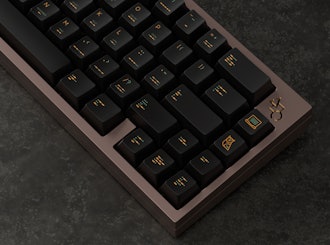
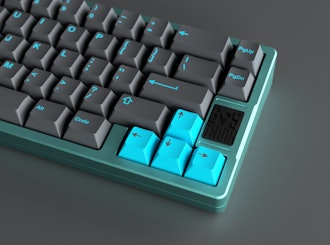
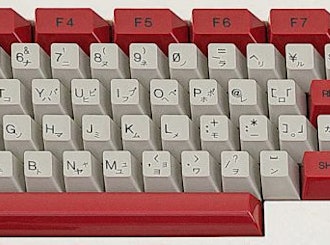
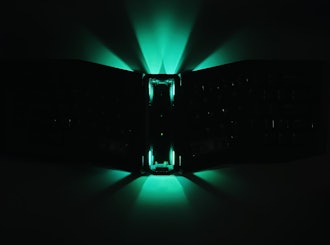

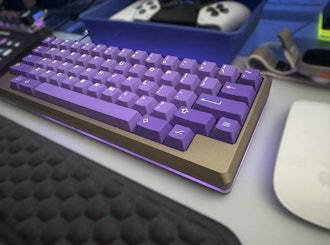
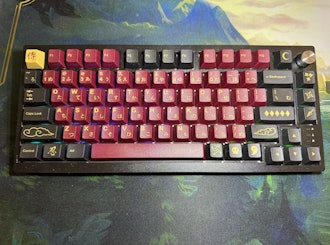

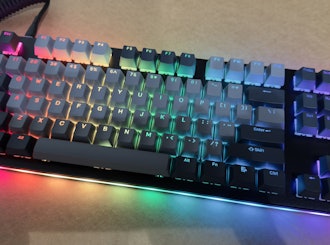

As a steno board, it rocks! It is awkward to use as a keyboard however (IMO) because Shift & Alt are not used as thumb keys, which isn't possible with such a compact layout. For someone looking for a keyboard that also does Plover, perhaps a helidox/crkbd would be better due to the extra keys. With only 40 keys, the Splitography layout is overall a compromise, albeit a reasonable one.
First class support for Matias quiet linear, the slight row stagger for the thumb keys, and the specialized keycaps are all stenography-specific optimizations. If you are looking for something strictly optimized for Plover, maybe to compliment your existing keeb, then this is it.
One of my favorite parts about this board is the RJ45 jacks connecting both halves. Ethernet cables are more common than TRRS cables, easier to customize, and the RJ45 jacks seem to be more robust than TRRS cables. One thing I wish was for the acrylic plate to have cutouts for the RJ45 port, which would then allow for a shortened board height by at least 3mm, maybe more.
Aside from wishing for an RJ45 cutout, there are a couple other enhancements that this sandwich case could benefit from. First, the bottom acrylic plate would do well to have recessed holes etched into it sized for rubber feet - something missing from the board. Second, the finish on the steel plate is lacking in quality, however I am more glad simply that a steel plate was even provided.